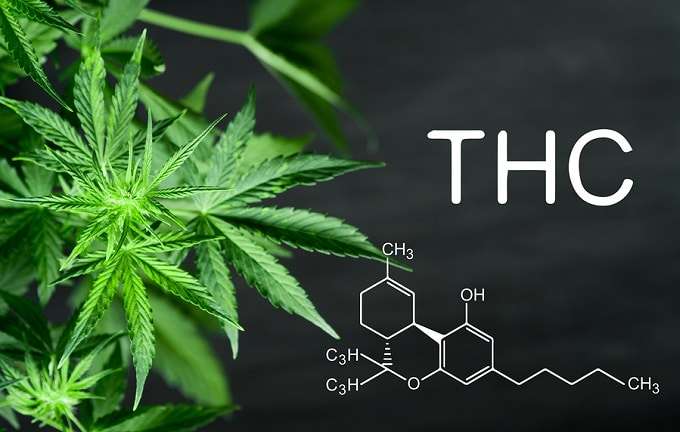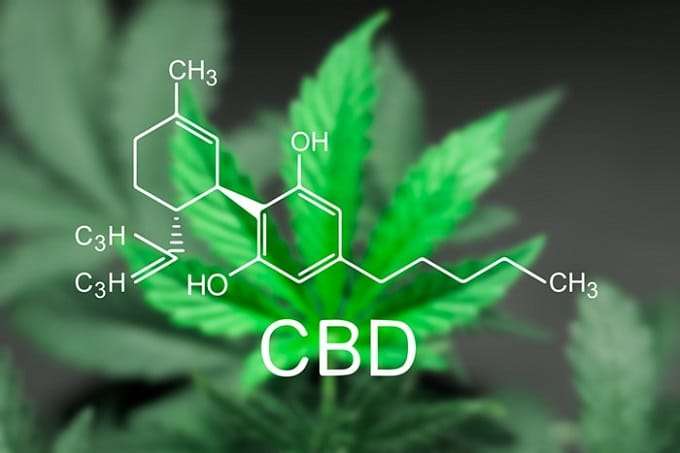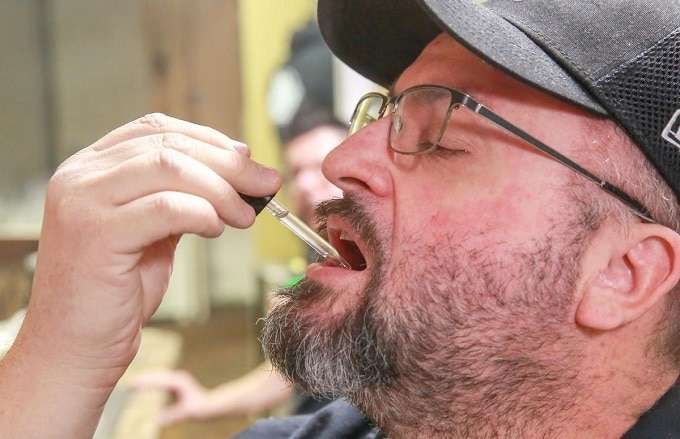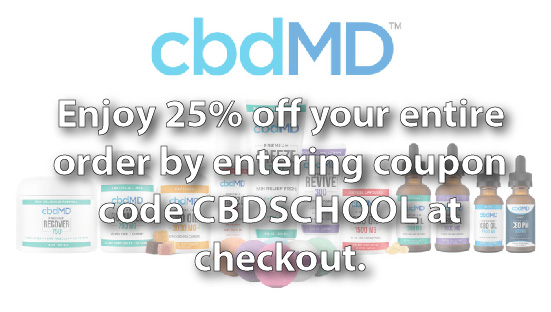If you’re new to cannabis – or considering trying it – you’ll see that suppliers have very specific labels on their products.
Aside from a strain’s funky name, there are also cannabinoid percentages listed.
One says “THC” and the other is “CBD.” While THC might be more of a household term than CBD (as it’s responsible for the euphoric high we all see in the media), most strains contain more of one than the other – although some can be really closely balanced.
While THC-rich strains can be effective at helping with a lot of issues, CBD is more obscure and, within the scope of treatment, tremendously underrated.
But before we dive into the relationship between THC and CBD, it’s important to define them both for the sake of context.
THC (Tetrahydrocannabinol)

“THC” stands for “tetrahydrocannabinol.”
It’s the psychoactive ingredient in marijuana that creates the euphoric and relaxing feeling of being “stoned.”
It achieves this by targeting the cannabinoid receptors in your brain, which affect things like cognitive abilities, coordination, and pleasure – hence the effect.
It’s also responsible for increasing appetite by stimulating the hypothalamus section of your brain, causing signals that make you feel hungry.
This makes it particularly effective for mitigating nausea and loss of appetite, making it fantastic for cancer patients undergoing chemotherapy, for instance.
Because of its effects on the brain, THC is often used for issues like headaches/migraines, insomnia, depression, and anxiety.
A larger percentage of THC means you’ll get a lot higher. But overdoing it is risky.
It’s not uncommon for a THC overdose to cause vomiting, dizziness, and paranoia.
This is why it’s best to start small and go slow, especially if you’ve never used medical marijuana before.
How Does THC Work?
When THC enters your bloodstream, it rushes to every nook and cranny of your body — and in some spaces, it interacts with a natural system within you called the endogenous cannabinoid system (ECS).
First discovered in 1990, the ECS seems to be a system integral to at least all mammals and possibly the group of animals that developed into mammals. The ECS in humans is incredibly complex, connected to a number of other systems within the body, including the immune system, the reproductive system, the endocrine system, the digestive system, the nervous system, and more.
As far as we can currently tell, the ECS is responsible for facilitating communication between these systems and for maintaining internal balance, called homeostasis. To accomplish these tasks, the ECS sometimes produces compounds, called endocannabinoids, which bind to different receptors to produce different effects.
The structure of THC is remarkably similar to one of these endocannabinoids, called anandamide. Anandamide is often called the “bliss molecule” because it helps the body and mind relax and enjoy pleasure.
Thus, THC successfully binds to ECS receptors around the body, inspiring similar effects to anandamide. Those effects are what make up the experience of being high: euphoria, muscle relaxation, hunger, increased libido, physical sensitivity, and more.
However, there tends to be much more THC in your body at one time than there ever is anandamide, which means THC binds in greater quantities to ECS receptors and produces much more intense effects. If you use more THC than your ECS is accustomed to, these effects are likely to be overwhelming, shifting from enjoyable to concerning.
You might experience the symptoms of a THC overdose, which include panic, paranoia, nausea, and hallucinations. These effects in and of themselves are not dangerous to your health, but they could put you in dangerous situations.
For example, you are at greater risk for vehicle collisions or dangerous falls when you are especially high. Thus, you should understand your tolerance and increase your dosage slowly, and you should not drive or otherwise put yourself in dangerous situations when you use THC.
CBD (Cannabidiol)

Cannabidiol, or “CBD” for short, is the non-psychoactive cannabinoid in marijuana.
Unlike THC, people who use pure CBD products won’t notice much – if any – sensation of feeling high.
Odds are, you’ll see little to no change in your mental or physical ability while under the influence of CBD. Instead, people who use it label the experience as a sort of “body high.”
If your condition causes severe body pain, then a high-CBD strain could be the better choice.
People who experience chronic physical pain due to illness or injury report the most benefits from this particular cannabinoid.
They say CBD curbs the discomfort without affecting their ability to function.
In the end, however, the product you use depends entirely on how you respond.
The THC/CBD comparison here is just a guideline to get you started. You might find that, in your particular case, the results are completely opposite.

My Experience with CBD Oil
Personally, I’ve tried a variety of strains before settling on CBD dominant products (CBD dominant products contain a tiny bit of THC – not enough to cause psychoactive effects).
This, of course, is entirely based on my personal experience.
While I have no trouble enjoying THC, it’s something I prefer to use for relaxation, and only at times when cognitive function isn’t needed, like before bed.
During the day, using THC makes me high for five to eight hours, putting me in an almost vegetative state where even the smallest things felt like they required a lot of effort to do.
It simply doesn’t make this a viable option, considering that I have work to do during the day.
In other words, taking THC every morning (like I do with CBD), would be the same as showing up to work drunk.
It just isn’t possible. Another problem I have with THC is that it requires careful balance on my part.
I find that taking in too much, especially when smoked, makes for a pretty nasty experience.
For instance, the first time I tried a THC strain, I used one called White Widow.
This contained very little CBD and something along the lines of 20 to 22% THC.
Unbeknownst to me at the time, this was a large concentration.
Sadly, I picked this strain on the advice of a friend who only smoked it recreationally (and illegally).
Apparently, White Widow is a big name among many users. Shortly after smoking it in my vaporizer, I felt way too high.
I like to think of myself as a logical person who’s grounded in reality, so I was able to talk myself through it by reminding myself that I was under the influence of this rather powerful strain.
Unfortunately, that didn’t stop me from getting really sick to my stomach, experiencing a pounding headache and, worst of all, feeling on the verge of experiencing a seizure – the very thing I was trying to help handle.
After coming down hours later, I resolved to maybe have White Widow around as a sleep aid and to use it in a much lower amount.
But in the end, it simply didn’t work for its intended purpose, which was to assist with epilepsy.
Fortunately, I also bought some CBD dominant cannabis oil, so I wasn’t out of luck.
If I learned anything, it’s not to take advice from someone who isn’t qualified.
Your provider will answer any questions you have, so learn from my experience and take advantage of those resources.
Always OK it with your doctor before you start using CBD.
In my case, CBD dominant products (remember: many good CBD products contain a tiny bit of THC, usually no more than 0.3% THC) are the right choice.
First off, it’s CBD that’s been shown to be effective in helping with epilepsy.
I’d already known this going in, so why I decided to try THC at all is, frankly, beyond me.
Second, I want to be lucid and alert throughout the day.
Cannabis research shows that, ideally, it’s best to use a strain that contains both THC and CBD.
This is due to a relationship between the two cannabinoids known as the Entourage Effect.
What is the Entourage Effect?
The different components in cannabis aren’t limited to just two major groups.
To best illustrate this, let’s look at THC and CBD as separate sports teams – say, hockey, for instance. Each team has its own name (THC/CBD).
But in order for each team to work, we have different positions: forwards (left-wing, right-wing), center, defense, and goalie, in this case.
Like a sports team, CBD and THC can’t stand on their own.
They’re just part of a bigger puzzle, relying on other components to achieve your needed effect.
The different positions on this metaphorical hockey team are the other components found in cannabis plants.
Some of them include terpenes, flavonoids, ketones, and fatty acids.
There are also other important cannabinoids found in cannabis in addition to CBD and THC.
Some examples are CBN, CBG, and CBC. The chart below is helpful. It shows the different cannabinoids found in cannabis plants.
Take notice of the fact that CBD is known to have the most beneficial effects. Let’s go back to our hockey team again.
Like any team, we’ll have a diversity of skills and abilities among the players.
Depending on the combination, this can weaken how effective a team is at one role while strengthening it in other areas.
Cannabinoids and components found in cannabis work in the same way. Some help you absorb THC and CBD, while others block it outright.
This is why diversity is important.
Considering the complex relationship between cannabinoid and non-cannabinoid components, sticking with THC or CBD alone isn’t always the most effective thing to do.
If you prefer CBD over THC or vice-versa, it’s ideal if there’s at least a small ratio of one to the other.
Does CBD Oil Work Without THC?
Read: THC vs CBD (Is One Cannabinoid Better Than the Other?)
Hopefully, the above story about my experience hasn’t scared you off.
Again, the experience only happened because of some serious (and admittedly dumb) errors in judgment.
If you’re careful and thorough in asking questions, odds are you won’t go through a similar nightmare.
As stated earlier, the Entourage Effect indicates that the best choice is to always mix some percentage of both THC and CBD.
If you find that one works better than the other, you can always get strains that contain mostly THC or CBD, but still have a small percentage of the other component.
Labels are handy that way. But if you really don’t want to use THC at all, the simple answer is, “Yes, CBD can work alone, but not as well as you might want.”
Even without a significant amount of THC, you are better off using a full-plant extract CBD product over a CBD isolate.
The reason is that a full-plant extract CBD product will contain other beneficial cannabinoids, terpenes, and flavonoids.
A CBD isolate, on the other hand, will be just isolated CBD. Hence the name, CBD isolate.
Most high-quality CBD hemp oil products will contain mostly CBD, a small amount of THC (no more than 0.3%), and other beneficial cannabinoids, terpenes, and flavonoids.
These are the best CBD hemp oil products to use.
The THC is too low to cause any psychoactive effects and you still get the benefit of the Entourage Effect.
Is CBD Oil Still Worth It Without THC?
First off, if there’s anything we can stress, it’s that each person is different.
Like any therapeutic substance, be it a prescription medication, herbal remedy, or – in this case – something that sort of lies in between those categories, our bodies dictate how we’ll react.
Some people prefer CBD dominant products, others like THC dominant products, and others like to go for the CBD isolates.
It all comes down to cautious experimentation and personal preference.
If you prefer CBD over THC, you do not need to necessarily take in a lot of THC to get the benefit of the Entourage Effect.
As we wrote above, a high quality, full plant extract CBD product will contain a small amount of THC and other cannabinoids, thereby giving you the Entourage Effect.
CBD isolates and products infused with CBD isolate are great too.
These products are ideal for people who absolutely cannot have any THC in their system — athletes and workers who have to take drug tests.
The Best Approach – Prudence and Caution
Even with definitive research on medical cannabis, there’s no way to predict how it will affect you.
Sadly, this leaves it mainly up to an educated guess, followed by careful trial and error.
With this in mind, just start with small doses and see how you feel. Work your way up and eventually, you’ll find a balance.
Medical cannabis is a new frontier.
As more and more doctors and patients use it for improving life, the answers and standards for its use will become more obvious.
Always consult a cannabis doctor or provider you trust before using your first cannabis supplement.


